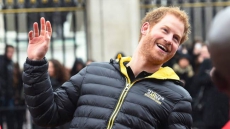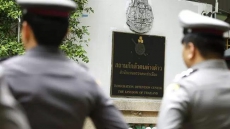An indirect link has been revealed between Saudi Prince Bandar bin Sultan and 9/11 attack in recently released declassified information from a 2002 US congressional report. The report on the 9/11 attacks, dubbed the “28 pages” was previously hidden from the American public.
It now reveals a link between the alleged al-Qaeda operative and a company associated with a key member of the Saudi royal family, former Saudi Ambassador to the United States Prince Bandar bin Sultan, reports the CNN.
During investigations into the attack it was found that 15 of the 19 men who hijacked the planes to carry out the attack were nationals but the possibility of official Saudi involvement has hung over the relationship between the two countries.
While the alleged association with Bandar revealed in the newly declassified pages does not provide direct evidence of his scomplicity in the 9/11 attacks but it does raise new questions about Saudi Arabia’s involvement.
The connection to Bandar was made through Abu Zubaydah’s phone book retrieved during the Pakistani raid in which he was taken. He was an alleged recruiter for al-Qaeda and a member of Osama bin Laden’s inner circle.
In the phonebook, the FBI found numbers linked to the United States, including an unlisted number for a company that managed Bandar’s estate in Aspen, Colorado. An unlisted number was also found for a bodyguard who worked at the Saudi Embassy in Washington.
“Both of those numbers were unpublished, so they had to have gotten into Zubaydah’s phone book through a personal contact who knew what those numbers were and what they represented,” said former Senator Bob Graham, co-chair of the congressional commission that compiled the 28 pages.

The CIA and FBI concluded that there was no evidence anyone from the Saudi royal family knowingly provided support for the 9/11 attacks. But Graham said the indirect connection to the respected former Saudi ambassador was “one of the most stunning parts of the investigation” and worthy of pursuing further.
Bandar was the Saudi ambassador to the United States from 1983 to 2005, during the Ronald Reagan, George H. W. Bush, Bill Clinton and George W. Bush administrations.
He later served as secretary general of Saudi Arabia’s National Security Council and head of Saudi Arabia’s General Intelligence Presidency, the equivalent of the CIA, until last year. The 28 pages were the only part of the initial congressional investigation into the September 11 attacks.
Actually numbering 29 pages, they detail a web of Saudi nationals living in the United States who may have aided the 9/11 hijackers. The George W. Bush administration deemed their publication a threat to national security and kept them confidential. But, after continuous pressure, the Obama administration agreed to make the pages public last month.
The FBI investigated the phone numbers indirectly linked to Bandar in 2002. A CIA-FBI investigation concluded in 2005 that there was “no evidence that either the Saudi government or a member of the Saudi royal family knowingly provided support” for the September 11 attacks or “had foreknowledge of terrorist operations in the kingdom or elsewhere.”

However, the 9/11 Commission report and the joint agency memo only offer blanket absolution of official Saudi involvement and do not reference the questions detailed in the 28 pages surrounding the phone numbers that indirectly seem to link Bandar to al-Qaeda.
The 28 pages also raise questions about another possible link between Bandar and the attacks: the prince’s relationship with a Saudi national named Osama Bassnan, who was living in the United States on 9/11 and was investigated to determine if he helped two of the 9/11 hijackers. The declassified pages reveal previously undisclosed amounts of money that Bandar and his wife sent to the man’s family.
Bassnan, a former employee of the Saudi government’s Educational Mission in Washington, according to a 9/11 Commission document, lived across the street from two of the 9/11 hijackers in San Diego: Nawaf al Hazmi and Khalid al Mihdhar. Both of them were on the plane that crashed American Airlines Flight 77 into the Pentagon.
While the clues found in Zubaydah’s notebook seemingly never led to concrete evidence linking the Saudi prince to al-Qaeda, Bandar’s name was mentioned again in 2014 when Zacarias Moussaoui, thought to be the 20th hijacker, claimed that Bandar was in an al Qaeda donor database.
Graham, the former senator that pushed to have the 28 pages declassified, thinks there’s enough to justify a closer look. Graham now wants the FBI and CIA documents pertaining to the questions raised in the 28 pages to be released as well.




